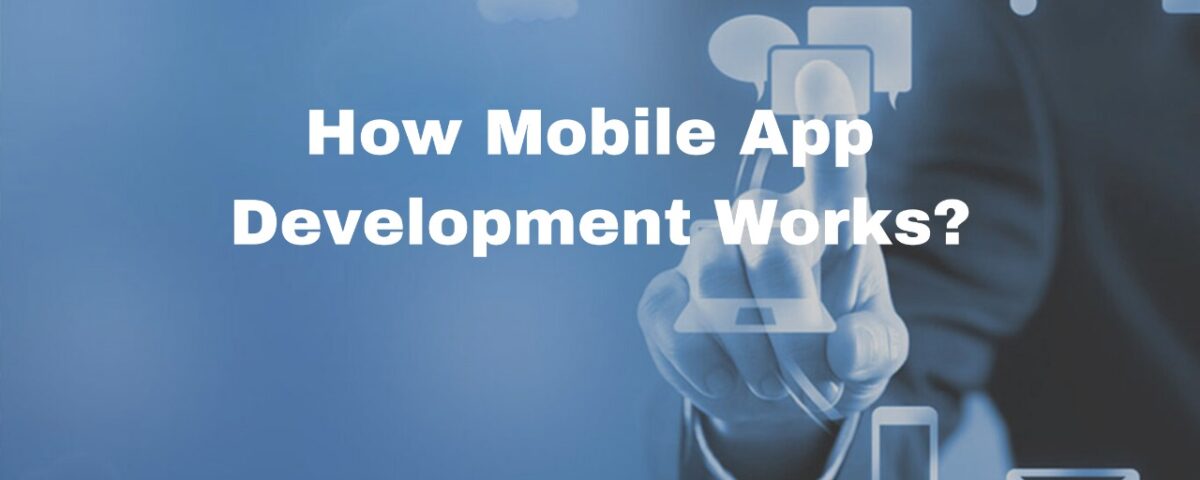How Mobile App Development Works?

How Much Does MLM Software Cost In India?
September 28, 2020
What is a Multi-Level Marketing Software?
October 10, 2020As more people are fascinated with mobile devices rather than desktops, many companies start working on Mobile App Development. It sounds easy, and most people are learning the functioning of App Development.
But how a mobile application works, and which steps you should consider? In this article, you will learn everything about mobile app advancement.
Mobile App Development
App Development defines the writing of software that works on a mobile device (smartphones, tablets, portable). App development isn’t just about coding in a traditional, HTML5, or hybrid app. It is about the strategic process of defining, designing, building, and presenting an active mobile product.
There are several main types:
Native Development: It includes using real programming languages and tools for a specific mobile OS: iOS or Android.
Cross-Platform Development: It focuses on building applications that run on multiple mobile operating systems simultaneously.
App development works should be glean from a modern app for all the senses. When it comes to mobile phones, the user’s excitement puts extra force on development teams but is remunerating in return.
How App Development Works?
To make the app truly stand out among the thousands of other top mobile apps in the App Store and Google Play, it is crucial to understand the critical steps of the app development process.
Research and Planning
Before design and development, there is a research phase in which you do all the details that can make a difference from the market and analysis of competitors to highly relevant data such as monetization methods.
You need to answer the following questions:
- What is the target audience?
- What main points did you discuss with your app and what problems will it solve?
- Who are your rivals? Why do people love your app?
- Which platforms will you use?
- What languages and structures will you use?
- How do you make money and promote your app? How much will it cost?
- What will be the timeline?
UX and UI design
After you have established the main idea and objectives, next comes the user information section and the use of the interface. This is where you decide what your app will look like and how it will be used, depending on the features you selected during the previous step.
Things You Need to Create:
Details of Construction: This is where you specify and provide data, interface, and application performance.
Wireframes: They provide a visual representation of what an application looks like, the size of the objects are elements, and how they are arranged in a consistent, that is, edited.
Style Guidelines: The style guide provides details of the various functions of the app, which ensures that the design is consistent.
Mockups: They show the movement of the app and are a kind of combination of wireframes and style guides.
Application Development
This section includes the application of the actual code of the application, as well as many additional functions such as checking the store’s guidelines. So that the application is not rejected. This is how mobile app development works.
Application development is a section with several major components:
Back / server-side: This is about information details and other server-like features such as storage solutions.
API: An API is a way for an app to connect to its back server with the tools and programs that you already use in your business.
Front-end: Front-end is the interactive UX, that is how app users interact with it. It connects back-end via API.
Testing And Launching
If you have a fully functional app, QA experts evaluate the app in a variety of ways to reduce the chance of an error occurring during real-life use. They go back to the primary documentation and make sure that all the edited features are in the final version of the product and work as they should. QA engineers make the app stable, efficient, and secure.
Support and Maintenance
The story doesn’t end with launching the app. If any bugs are revealed during real-world use, they’re fixed. If the first few months indicate that the app has a lot of potential for development, the client can choose to make maintenance arrangements or start a new development cycle.
The process of mobile app development can be very complicated and tedious. However, it can be a very gratifying process if done right. Steps discussed above to create mobile applications for both business and startup clients.





